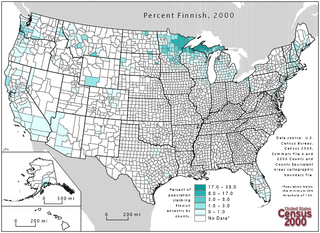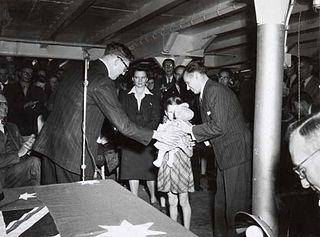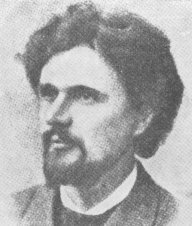
Finnish Americans comprise Americans with ancestral roots in Finland, or Finnish people who immigrated to and reside in the United States. The Finnish-American population is around 650,000. Many Finnish people historically immigrated to the Upper Peninsula of Michigan and the Iron Range of northern Minnesota to work in the mining industry; much of the population in these regions is of Finnish descent.

Greek Australians are Australians of Greek ancestry. Greek Australians are one of the largest groups within the global Greek diaspora. As per the 2021 census, 424,750 people stated that they had Greek ancestry, comprising 1.7% of the Australian population. At the 2021 census, 92,314 Australian residents were born in Greece.
Finnish Canadians are Canadian citizens of Finnish ancestry or Finns who emigrated to and reside in Canada. In 2016, 143,645 Canadians claimed Finnish ancestry. Finns started coming to Canada in the early 1880s, and in much larger numbers in the early 20th century and well into the mid-20th century. Finnish immigration to Canada was often a direct result of economic depressions and wars, or in the aftermath of major conflicts like the Finnish Civil War. Canada was often chosen as a final destination because of the similarity in climate and natural conditions, while employment in logging or homesteading attracted landless farmers in the early 20th century. Migratory movements of Finns between Canada and the United States was very common as well.

Italian Australians are Australian-born citizens who are fully or partially of Italian descent, whose ancestors were Italians who emigrated to Australia during the Italian diaspora, or Italian-born people in Australia.

Lebanese Australians refers to citizens or permanent residents of Australia of Lebanese ancestry. The population is diverse, having a large Christian religious base, being mostly Maronite Catholics, while also having a large Muslim group of Sunni branch of Islam.
Sudanese Australians are people of Sudanese origin or descent living in Australia. The largest population of Sudanese Australians reside in Victoria (6,085).

Polish Australians refers to Australian citizens or residents of full or partial Polish ancestry, or Polish citizens living in Australia.

Post-war immigration to Australia deals with migration to Australia in the decades immediately following World War II, and in particular refers to the predominantly European wave of immigration which occurred between 1945 and the end of the White Australia policy in 1973. In the immediate aftermath of World War II, Ben Chifley, Prime Minister of Australia (1945–1949), established the federal Department of Immigration to administer a large-scale immigration program. Chifley commissioned a report on the subject which found that Australia was in urgent need of a larger population for the purposes of defence and development and it recommended a 1% annual increase in population through increased immigration.

Bosnian Australians are Australians of Bosnian ancestry. At the 2021 census, 28,246 people stated that they had Bosnian ancestry. At the 2021 census, 26,171 Australian residents were born in Bosnia and Herzegovina.
African Australians are Australians descended from the any peoples of Sub-Saharan Africa, including naturalised Australians who are immigrants from various regions in Sub-Saharan Africa and descendants of such immigrants. At the 2021 census, the number of ancestry responses categorised within Sub-Saharan African ancestral groups as a proportion of the total population amounted to 1.3%.
Laotian Australians, also known as Lao Australians, refers to Australians who have either migrated from Laos and/or have Lao ancestry. The first Lao people that came to live in Australia arrived through the Colombo Plan in the 1960s, which gave a number of Laotians the opportunity to live and study in Australia. The migration of the Lao commenced with the Indochinese refugee crisis in 1975 following communist regime takeovers. According to the 2016 Census, there are 10,402 Laos-born Australians with the majority residing in New South Wales.
Albanian Australians are residents of Australia who have Albanian heritage or descent; many are from Albania and North Macedonia but some are from Kosovo, Montenegro, Greece, Turkey, Bosnia and Italy. Albanian Australians are a geographically dispersed community; the largest concentrations are in the Melbourne suburb Dandenong and in the regional city Shepparton, both of which are in Victoria. The Albanian community has been present in Australia for a long period, and its presence in the country is unproblematic and peaceful.

Spanish Australians refers to Australian citizens and residents of Spanish descent, or people who were born in Spain and immigrated to Australia. There are approximately 123,000 Australians who are of full or partial Spanish descent, most of whom reside within the major cities of Sydney and Melbourne, with lesser but rapidly growing numbers in Brisbane and Perth. Of these, according to the 2011 Australian census, 13,057 were born in Spain.
Taiwanese Australians are Australian citizens or permanent residents who carry full or partial ancestry from the East Asian island country of Taiwan or from preceding Taiwanese regimes.

Matti Kurikka was a Finnish journalist, theosophist, and utopian socialist.
Somali Australians are citizens and residents of Australia who are of Somali ancestry.
Finnish Argentine is an Argentine person of full, partial, or predominantly Finnish ancestry, or a Finnish-born person residing in Argentina.
Syrian Australians are Australians of Syrian descent or Syria-born people who reside in the Commonwealth of Australia. Australian Syrians make up 0.4 percent of the Australian population, with a gender split of 51.3 percent female, 49.7 percent male. The 2016 Australian census revealed 68.8 percent of Syrian Australian homes have Arabic as the language spoken at home, however of the homes where English is not the first spoken language, 37.7 percent are able to speak English fluently. The majority of Syrian Australians arrived prior to 2007, with a small group immigrating between 2007–2011 then a larger group entering between 2012–2016.

Asian Australian history is the history of Asian ethnic and racial groups in Australia who trace their ancestry to Asia. The term Asian Australian, was first used in the 1950s by European Australians who wanted to strengthen diplomatic and trade ties with Asia for the benefit of the Australian community. The term was not originally used to describe or recognise the experiences of people of Asian descent living in Australia. It was only in the late 1980s and 1990s that the term "Asian Australian" was adopted and used by Asian Australians themselves to discuss issues related to racial vilification and discrimination. Today, the term "Asian Australian" is widely accepted and used to refer to people of Asian descent who are citizens or residents of Australia, though its usage and meaning may vary within the Asian Australian community.
Asian immigration to Australia refers to immigration to Australia from part of the continent of Asia, which includes East Asia, Southeast Asia, and South Asia.The first major wave of Asian immigration to Australia occurred in the late 19th century, but the exclusionary White Australia policy, which was implemented to restrict non-European immigration, made it difficult for many Asian immigrants to migrate to the country. However, with the passage of the Migration Act 1958, the White Australia policy began to be phased out and Asian immigration to Australia increased significantly. Today, Asian immigrants from a wide range of countries play an important role in the cultural and economic landscape of Australia.












